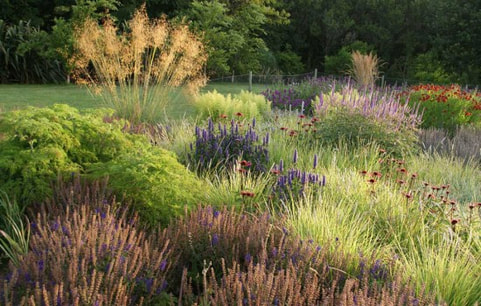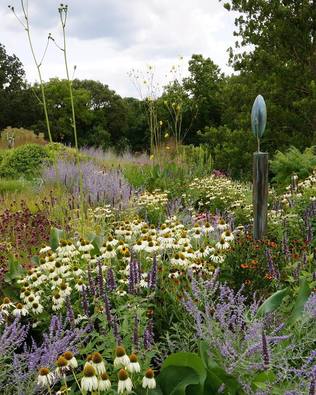Let's take amending soil. There's this idea that there is only one good garden bed -- one composed of loose, crumbly, earthy-smelling black gold. When we're talking ornamental gardening nothing could be further from the truth (however, vegetable gardens do usually require a "perfect" bed). Even if you stop to think critically about where you find this information, you should start hearing some alarm bells. It's companies, businesses, and products that need you to buy more. Hardware stores get truckloads of bagged topsoil and amendments each spring and stack them up in the parking lots enticing you. Landscapers increase their bottom line by offering additional improvements in the form of soil conditioners, top soil, wood mulch, fertilizer, etc. But most often you don't need all of that. Here's why amending soil isn't as big of a deal as you think.
1) The perfect or ideal soil is the soil you have right now. Unless your land is poisoned or there are drainage issues undermining a structure, amending soil is often an expensive and back-breaking practice for homeowners (soil tests can tell you a lot, by the way). There are a plethora of plants from around the world -- and of course lots of native plants, too -- that will thrive in sandy, gravelly, rocky, loamy, mushy, or clay soils. In fact, by plethora we mean hundreds available to you right now in the nursery trade. A garden designer or landscaper worth their salt will know these plants and be able to match them to you site. And amended garden areas aren't usually that big or deep; what does a plant think when it hits the native soil beyond its perfect little princess zone? "Uh, no thanks, I'll just stay right here." In the case of perennials this may inhibit their drought tolerance, and for large trees it will increase their likelihood of falling over in a windstorm because they didn't root out far enough to anchor in.
3) Matching plants to one another. There's more to know about plants than the soil, light, and moisture levels they evolved in. There's also the art of designing plant communities. A plant community is one with balance where plants naturally support and even compete with another over time to create a healthy and ecologically-sound landscape. Simply put, when we match plants to one another we increase the plant's ability to be healthy. For example, planting taprooted plants among fibrous-rooted plants means no one is competing for resources at the same level. Or using behaved clumpers together (play nice, kids, and everyone will get a turn) or aggressive thugs together (butting heads means everyone keeps the other in check and no one wins out but they all work together for a common good -- or how government is supposed to work).
All of these practices -- from matching plants to the soil and site and to one another, layering of the root zone and top growth, and leaving spring cuttings in place -- is all the the soil amending you'll ever need to do. And the only thing it will cost you is the price of plants, which you were in for anyway, and rethinking traditional high-maintenance practices. Do you see prairies and woodlands bring soil amendments, fertilizers, and wood mulch in bags and dump trucks? What can we learn from nature about creating resilient and sustainable landscapes that look pretty to us and wildlife?




 RSS Feed
RSS Feed

